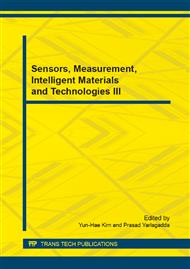p.711
p.715
p.720
p.726
p.730
p.734
p.738
p.746
p.751
Advances in Intelligent Visual Surveillance Technology
Abstract:
With the improvement of people's security requirements,increasing the number of surveillance cameras,video surveillance by human beings is no longer suitable. Hence,intelligent visual surveillance technology emerges and becomes one of the hottest research points. In this paper,the processing of intelligent video surveillance based on human motion was divided into four categories: target detection,target tracking,object classification and recognition,and behavior analysis. Also made a detailed comprehensive review for situation of these parts,and made comprehensively summarized for the problems and difficulties which have to be resolved.
Info:
Periodical:
Pages:
730-733
Citation:
Online since:
March 2015
Price:
Сopyright:
© 2015 Trans Tech Publications Ltd. All Rights Reserved
Share:
Citation:


